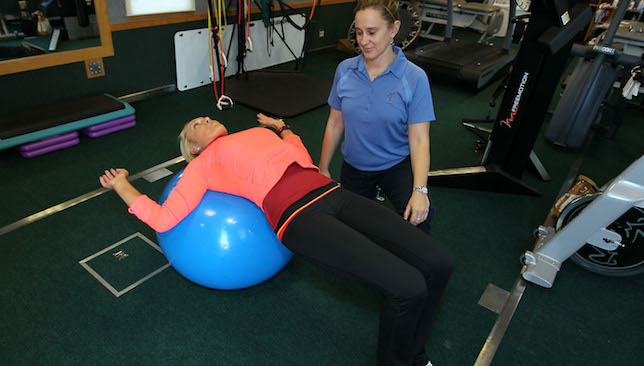
Throughout my long career as a fitness instructor, many people have come to me with back problems, having been told that they need to strengthen their core, namely the deep abdominal muscles.
But what most of these clients had in common were weak gluteal muscles, the “sleeping giants”, the muscles we tend to spend far too long sitting on. The gluteal group of muscles are a group of three comprising of gluteus maximus, gluteus medius and gluteus minimus.
Together they work to extend the hip as well as stabilising the pelvis and spine and keeping us upright.
Through evolution the gluteus maximus enlarged in humans to help stabilise the trunk while standing and to counteract the high impact forces that flex the trunk during running.
Our modern, sedentary lifestyle is a major contributing factor to weak glute muscles which will eventually lead to injuries.
This is the perfect buns workout to get those glute muscles ... - https://t.co/Qu667f7q7Z #fatburn #workout pic.twitter.com/m2CyfNaG2F
— Fat Burning Workout (@FatBurningWorka) June 17, 2016
Common injuries arising from weak gluteals:
1. SIJ pain: The sacroiliac joint is designed to have very little movement, but without adequate strength in the glutes, the joint lacks the required stability and may result in pain.
2. Malalignment of the lower body: Strong glutes help maintain the correct leg alignment. If the glutes are weak, the thigh bones internally rotate leading to many seemingly unrelated problems such as flat feet, ankle instability, knee problems and ITB issues.
3. Hip pain: The stability of the hip/femur joint is compromised as weak glutes leadto wear and tear.
4. Lower back pain: Muscles need to fire up in the correct order and in the case of weak glutes, activation is delayed. In the case of everyday tasks such as lifting, the back extensors will compensate, putting them under excessive pressure.
5. Hamstring strain: During hip extension, delayed glute activation causes the hamstrings to become dominant which can lead to strain. When someone suffers an injury such as this, they work on improving the function of the injured muscle, but we need to look above or below to find the weakness or tension and work on that.
As illustrated above, a relatively strong muscle can be injured, but the culprit may be a synergist muscle and glutes work together during hip extension so hamstrings that are overworked due to weak glutes will be prone to injury, but it’s the glutes that need to be worked on.
On the other hand, it could be tightness in a muscle or muscle group that causes weakness: for example, tight hip flexors that have the opposite job of the gluteals can become tight from too much sitting and can inhibit adequate activation of the glutes.
Ensure your fitness routine is balanced and offers you all the components of fitness, because the entire body is linked.
In short, every action within our body creates a ripple effect across the whole kinetic chain.